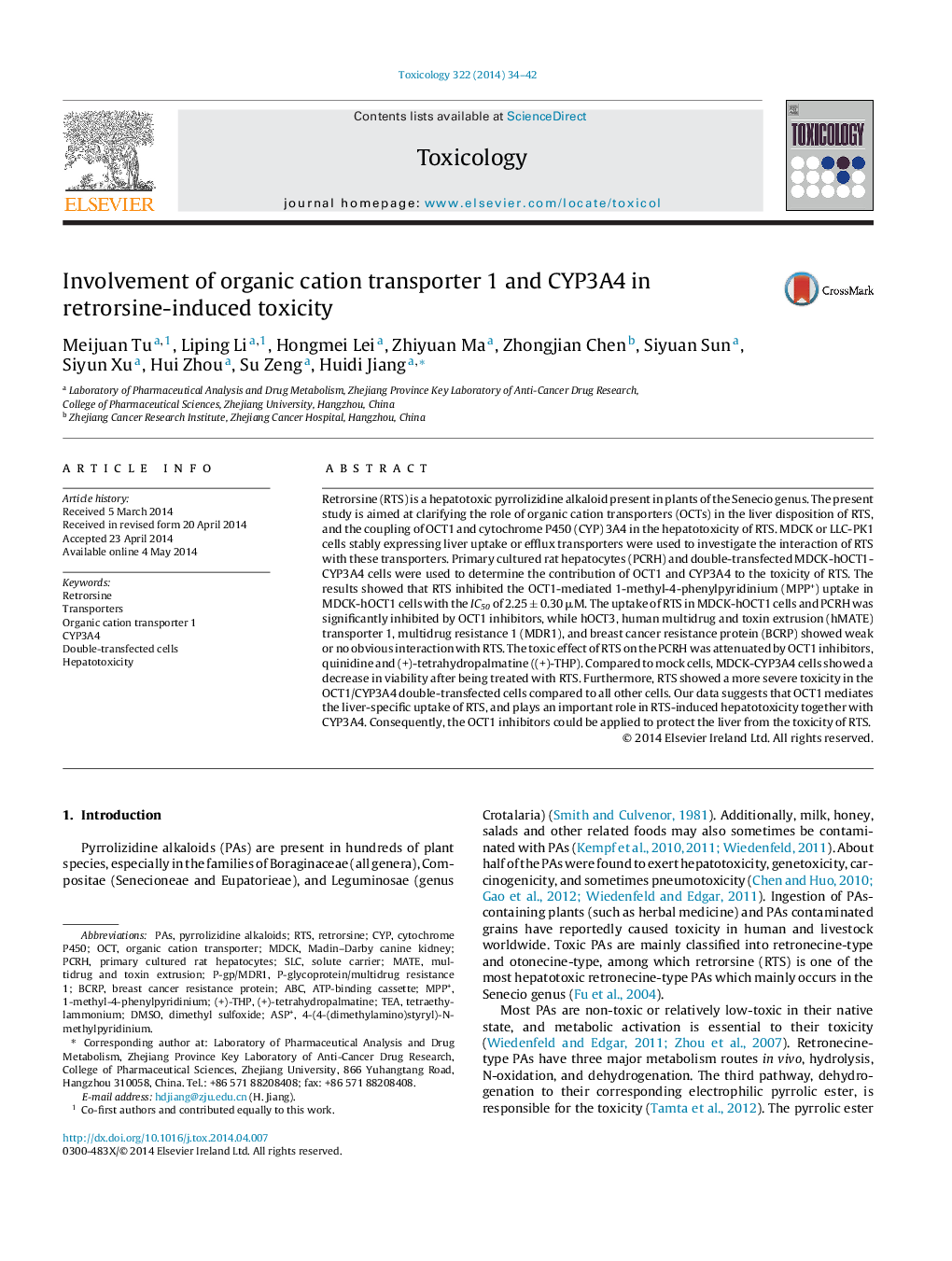| کد مقاله | کد نشریه | سال انتشار | مقاله انگلیسی | نسخه تمام متن |
|---|---|---|---|---|
| 2595541 | 1562334 | 2014 | 9 صفحه PDF | دانلود رایگان |

• Retrorsine is proved to be a substrate of organic cation transporter 1, a weak substrate of P-gp, but not of OCT3, MATE1, and BCRP.
• OCT1 and CYP3A4 are responsible for the hepatotoxicity of retrorsine.
• Double-transfected MDCK-hOCT1-CYP3A4 cell model is established and applied.
Retrorsine (RTS) is a hepatotoxic pyrrolizidine alkaloid present in plants of the Senecio genus. The present study is aimed at clarifying the role of organic cation transporters (OCTs) in the liver disposition of RTS, and the coupling of OCT1 and cytochrome P450 (CYP) 3A4 in the hepatotoxicity of RTS. MDCK or LLC-PK1 cells stably expressing liver uptake or efflux transporters were used to investigate the interaction of RTS with these transporters. Primary cultured rat hepatocytes (PCRH) and double-transfected MDCK-hOCT1-CYP3A4 cells were used to determine the contribution of OCT1 and CYP3A4 to the toxicity of RTS. The results showed that RTS inhibited the OCT1-mediated 1-methyl-4-phenylpyridinium (MPP+) uptake in MDCK-hOCT1 cells with the IC50 of 2.25 ± 0.30 μM. The uptake of RTS in MDCK-hOCT1 cells and PCRH was significantly inhibited by OCT1 inhibitors, while hOCT3, human multidrug and toxin extrusion (hMATE) transporter 1, multidrug resistance 1 (MDR1), and breast cancer resistance protein (BCRP) showed weak or no obvious interaction with RTS. The toxic effect of RTS on the PCRH was attenuated by OCT1 inhibitors, quinidine and (+)-tetrahydropalmatine ((+)-THP). Compared to mock cells, MDCK-CYP3A4 cells showed a decrease in viability after being treated with RTS. Furthermore, RTS showed a more severe toxicity in the OCT1/CYP3A4 double-transfected cells compared to all other cells. Our data suggests that OCT1 mediates the liver-specific uptake of RTS, and plays an important role in RTS-induced hepatotoxicity together with CYP3A4. Consequently, the OCT1 inhibitors could be applied to protect the liver from the toxicity of RTS.
Figure optionsDownload as PowerPoint slide
Journal: Toxicology - Volume 322, 1 August 2014, Pages 34–42